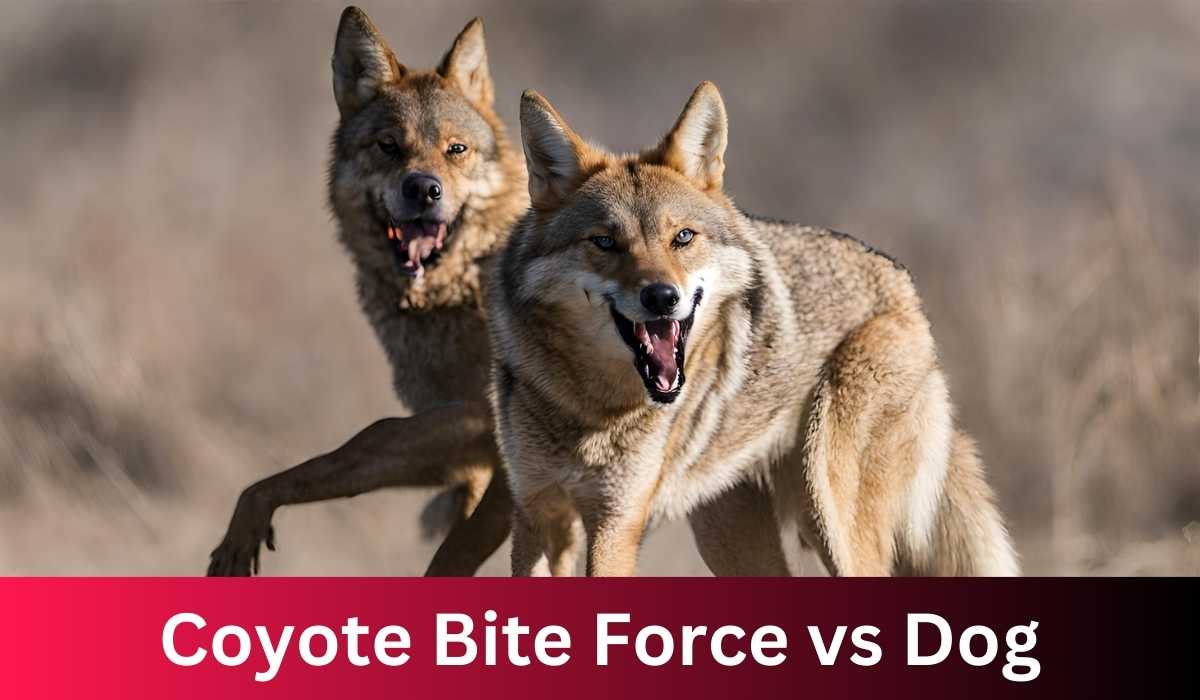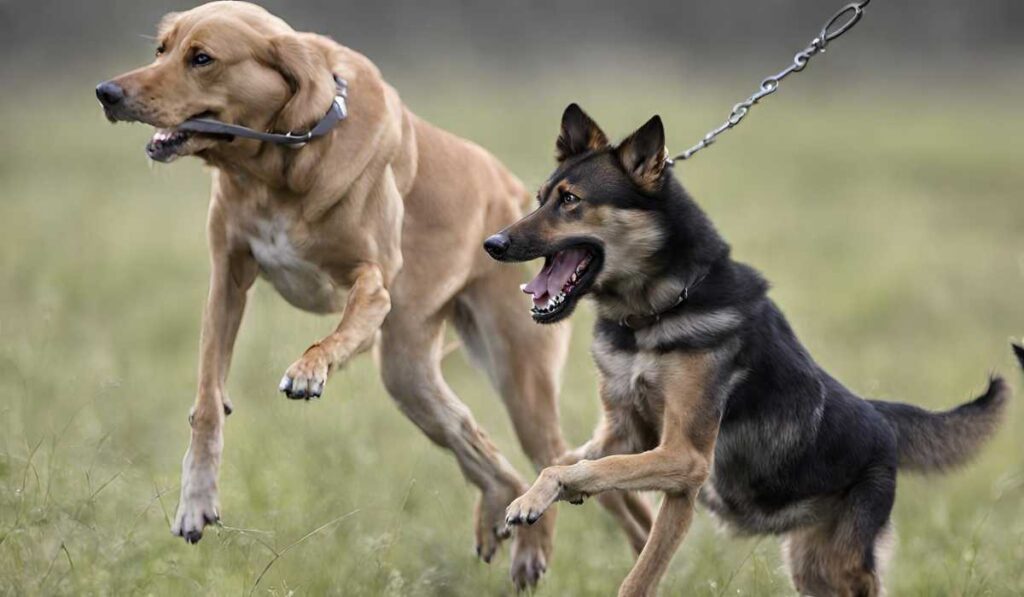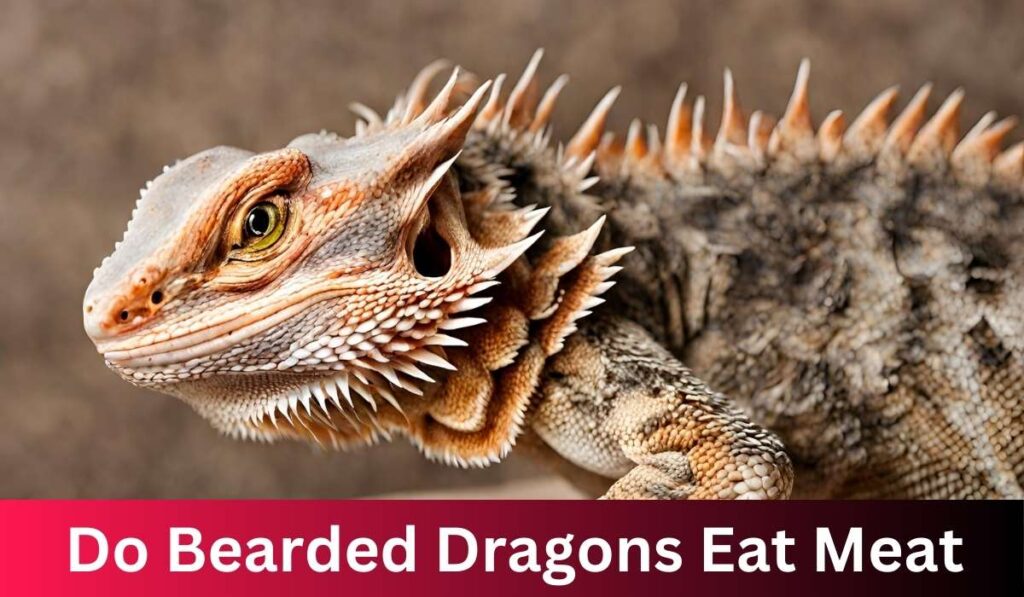
In the wild, strength is often the measure of survival. Among the numerous creatures roaming the wilderness, the coyote stands as a symbol of adaptability and resilience.
With its cunning nature and formidable bite force, it commands respect in its habitat. But how does this bite force compare to that of man’s best friend, the dog?
In this comprehensive exploration, we delve into the intriguing realm of predator prowess, focusing on the bite force dynamics between coyotes and dogs.
Understanding Coyote Bite Force vs Dog
Before delving into the comparison, it’s essential to grasp the concept of bite force and its significance in the animal kingdom.
Bite force, measured in pounds per square inch (psi), quantifies the pressure exerted by an animal’s jaw muscles when biting down.
It serves as a critical determinant of an animal’s hunting prowess, defensive capabilities, and overall survival strategy.
The Mighty Coyote

Coyotes, native to North America, are renowned for their adaptability and resourcefulness. Despite their relatively small size compared to some apex predators, they possess a bite force that belies their stature.
Research indicates that the bite force of a coyote ranges between 150 to 200 psi, making it a formidable predator in its ecosystem.
This impressive force enables coyotes to effectively hunt small to medium-sized prey, including rodents, rabbits, and even deer fawns.
Comparing Canine Forces
Transitioning from the wilderness to the domestic sphere, we encounter another member of the Canidae family: the dog.
Dogs, having undergone centuries of domestication, exhibit a diverse range of breeds, each with its unique characteristics.
While the bite force of dogs varies significantly depending on breed and size, it generally falls within a comparable range to that of coyotes.
Exploring the Disparities
Despite the similarities in bite force, notable differences exist between coyotes and dogs. Coyotes, as wild predators, have honed their bite force through evolutionary pressures, optimizing it for survival in their natural habitat.
In contrast, domestic dogs, although sharing common ancestry with coyotes, may exhibit variations in bite force due to selective breeding and lifestyle factors.
The Impact of Size and Breed
Transitioning from general comparisons, we delve into the influence of size and breed on bite force dynamics.
Larger dog breeds, such as Mastiffs and Rottweilers, often boast greater bite force compared to smaller breeds like Chihuahuas or Dachshunds.
Similarly, wild coyotes may display variations in bite force based on factors such as age, sex, and individual health.
The Role of Evolutionary Adaptations
Evolutionary biology plays a pivotal role in shaping bite force capabilities among canines. Over millennia, both coyotes and dogs have evolved distinct jaw structures and muscle compositions tailored to their respective ecological niches.
Coyotes, as apex predators in their habitats, have undergone selective pressures favoring powerful jaws suited for hunting and scavenging.
Dogs, on the other hand, have undergone selective breeding for traits ranging from companionship to specialized tasks, resulting in diverse bite force profiles across breeds.
Practical Implications and Human Interactions

The discussion on bite force extends beyond theoretical comparisons, bearing practical implications for human interactions with canines, both wild and domesticated.
Understanding the bite force dynamics of coyotes and dogs is essential for wildlife management strategies, pet safety protocols, and responsible ownership practices.
Moreover, it underscores the importance of coexistence and conservation efforts in preserving ecological balance.
Also Read: What Does A Coyote Den Look Like: Appearance & Location
Conclusion
In conclusion, the comparison of bite forces between coyotes and dogs offers a fascinating glimpse into the intricacies of predator biology.
While both species exhibit formidable capabilities shaped by evolutionary processes, nuances in size, breed, and lifestyle influence their bite force dynamics.
By unraveling these complexities, we gain deeper insights into the natural world and our relationship with its inhabitants, fostering a greater appreciation for the wonders of biodiversity.
FAQs
What is the average bite force of a coyote?
The average bite force of a coyote typically ranges between 150 to 200 pounds per square inch (psi), enabling it to effectively hunt and subdue prey in its natural habitat.
How does the bite force of a coyote compare to that of a dog?
While there can be variations among breeds, the bite force of coyotes generally falls within a comparable range to that of domestic dogs, highlighting the shared evolutionary history within the Canidae family.
Are there specific factors that influence the bite force of a coyote?
Yes, various factors such as age, sex, individual health, and ecological pressures can influence the bite force capabilities of coyotes, contributing to variations observed within populations.
Do larger dog breeds typically have a stronger bite force than smaller breeds?
Yes, larger dog breeds such as Mastiffs and Rottweilers often exhibit greater bite force compared to smaller breeds like Chihuahuas or Dachshunds, owing to differences in jaw size and muscle mass.
How does selective breeding impact the bite force of domestic dogs?
Selective breeding practices have led to the development of diverse dog breeds with varying bite force capabilities, tailored to specific roles such as guarding, herding, or companionship.
What ecological roles does the bite force of a coyote serve in its ecosystem?
The bite force of a coyote plays a crucial role in regulating prey populations, facilitating scavenging activities, and maintaining ecological balance within its habitat as an apex predator.
Can coyotes interbreed with domestic dogs, affecting bite force dynamics?
While rare, interbreeding between coyotes and domestic dogs can occur, potentially influencing bite force characteristics in hybrid offspring, though the extent of this impact may vary.
Are there documented cases of coyote attacks on humans, reflecting their bite force capabilities?
While coyote attacks on humans are relatively rare, instances have been reported, underscoring the potential danger posed by their bite force, particularly in encounters where coyotes feel threatened or cornered.
How do scientists measure the bite force of coyotes and dogs?
Bite force is typically measured using specialized instruments such as force gauges or pressure sensors, which quantify the amount of pressure exerted by an animal’s jaw muscles when biting down.
What are some precautions for mitigating potential risks associated with coyote encounters?
Precautions for minimizing risks in coyote-prone areas include avoiding feeding wildlife, securing garbage bins, supervising pets outdoors, and employing deterrents such as noise makers or bright lights.
Do coyotes and dogs exhibit similar hunting strategies despite differences in bite force?
While both coyotes and dogs employ similar hunting techniques such as stalking, chasing, and ambushing prey, variations in bite force may influence their choice of targets and hunting success rates.
How can an understanding of bite force dynamics benefit wildlife conservation efforts?
Understanding bite force dynamics among canines contributes to informed conservation strategies, aiding in the preservation of balanced ecosystems and the promotion of coexistence between wildlife and human communities.








